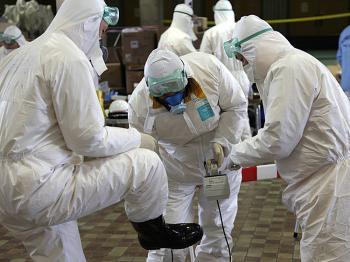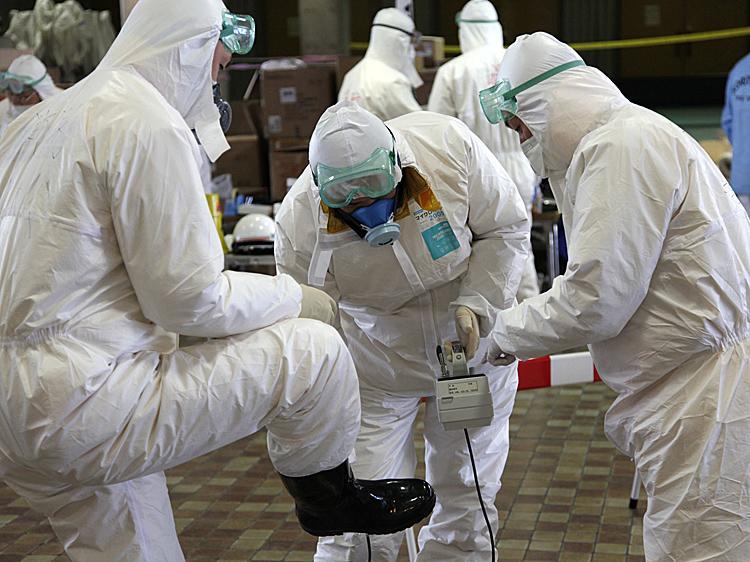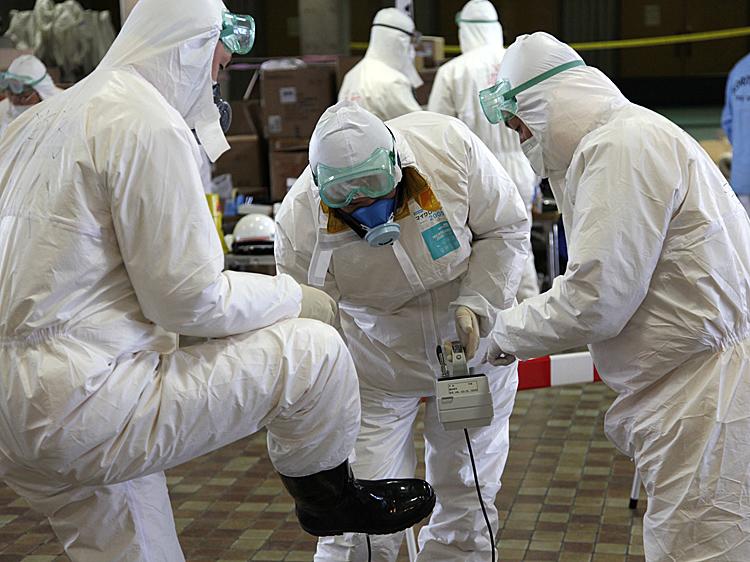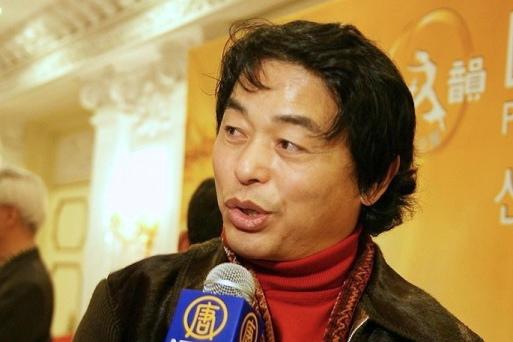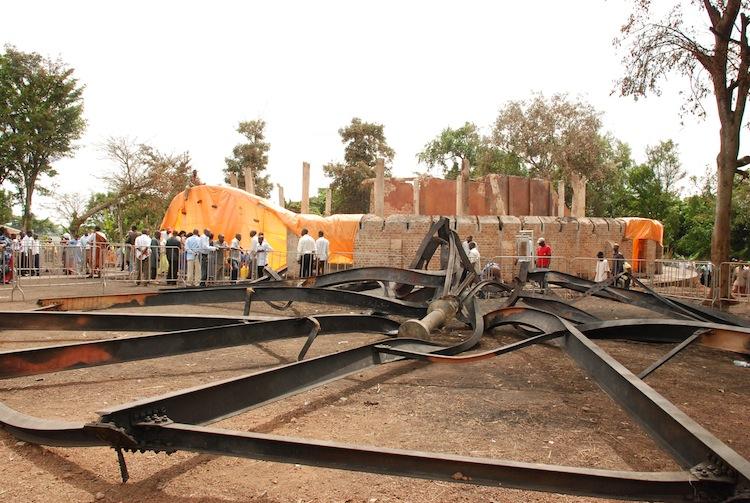Now that Japanese engineers have restored limited power to the earthquake-stricken Fukushima Daiichi nuclear power plant, they can reactivate the cooling systems that were damaged by the magnitude 9.0 earthquake on March 11.
Tokyo Electric Power Co. (TEPCO), the operator of the plant, has already connected power cables to the plant’s No. 1 and 2 reactors, but International Atomic Energy Agency Director General, Japan’s Yukiya Amano, said it is too early to tell if the efforts will successfully bring the plant—which comprises six reactors—under control.
“I hope that safety, stability will be recovered as soon as possible... But I still don’t think it is time to say that I think they are going in a good direction or not,” Amano told reporters at Vienna airport on Saturday after his brief trip to Japan, according to Reuters.
TEPCO said on Sunday morning in a press release that it is working on getting external power supply to the plant’s No. 3 and 4 reactors. In the mean time, they have been using the fire department and police water cannons to spray water into the pressure vessels and spent nuclear fuel storage pool to cool them down.
At the No. 4 reactor, the Ground Self-Defense Force sprayed about 80 tons of water from a vehicle on the spent nuclear fuel storage pool for about an hour until 9:30 a.m. Sunday. It was the reactor’s first water injection since its cooling system failed.
“We are considering further water discharge at Unit 3 and others subject to the conditions of spent fuel pools,” TEPCO said.
TEPCO said the previously overheated pools of reactors No. 5 and 6 were cooled down to 98.8 and 105.8 degrees Fahrenheit (37.1 and 41.0 Celsius) respectively as of 7 a.m. Sunday, Kyodo News reported.
The water in the pools needs to be kept under boiling point of 212 degrees Fahrenheit (100 Celsius); otherwise the water could evaporate to expose the hot spent fuel rods. The fuel rods could heat to the point of combusting, usually referred to as a meltdown, which would release a catastrophic amount of radioactive materials into the environment.
Despite the efforts, small amounts of radioactive materials have already seeped to neighboring areas. Chief Cabinet Secretary Yukio Edano said on Saturday that radiation levels in spinach and milk from farms near the nuclear plant exceeded government safety limits, but the products posed no “immediate health risk.”
“It’s not like if you ate it right away you would be harmed,” Edano said, according to The Associated Press. “It would not be good to continue to eat it for some time.”
Edano said the radiation amount in milk would be equivalent to one CT scan if consumed continually for a year, while for spinach it would be a fifth of a CT scan.
On Sunday, traces of radioactive iodine were detected in Tokyo and surrounding Kanto region after the government conducted an investigation of radioactivity in precipitation and dust.
“Higher-than-normal levels of radiation could be detected in rain, but it would contain only a small amount of radioactive substances which do not affect health at all,” the government announced on Sunday. “The levels wouldn’t go beyond the average of natural radiation dose.”
The Ibaraki prefectural government announced that slight amounts of radioactive iodine and cesium have been found in tap water on Sunday, but the levels were below government limits and the effects should be minimal.
Aside from water, Kyodo News reported that spinach in Ibaraki had radioactive iodine level 12 times the regulated level.
As of Sunday morning, nearly 20,000 people have been declared dead or missing. The National Police Agency now says 7,700 were killed and 11,651 are missing.
Tokyo Electric Power Co. (TEPCO), the operator of the plant, has already connected power cables to the plant’s No. 1 and 2 reactors, but International Atomic Energy Agency Director General, Japan’s Yukiya Amano, said it is too early to tell if the efforts will successfully bring the plant—which comprises six reactors—under control.
“I hope that safety, stability will be recovered as soon as possible... But I still don’t think it is time to say that I think they are going in a good direction or not,” Amano told reporters at Vienna airport on Saturday after his brief trip to Japan, according to Reuters.
TEPCO said on Sunday morning in a press release that it is working on getting external power supply to the plant’s No. 3 and 4 reactors. In the mean time, they have been using the fire department and police water cannons to spray water into the pressure vessels and spent nuclear fuel storage pool to cool them down.
At the No. 4 reactor, the Ground Self-Defense Force sprayed about 80 tons of water from a vehicle on the spent nuclear fuel storage pool for about an hour until 9:30 a.m. Sunday. It was the reactor’s first water injection since its cooling system failed.
“We are considering further water discharge at Unit 3 and others subject to the conditions of spent fuel pools,” TEPCO said.
TEPCO said the previously overheated pools of reactors No. 5 and 6 were cooled down to 98.8 and 105.8 degrees Fahrenheit (37.1 and 41.0 Celsius) respectively as of 7 a.m. Sunday, Kyodo News reported.
The water in the pools needs to be kept under boiling point of 212 degrees Fahrenheit (100 Celsius); otherwise the water could evaporate to expose the hot spent fuel rods. The fuel rods could heat to the point of combusting, usually referred to as a meltdown, which would release a catastrophic amount of radioactive materials into the environment.
Despite the efforts, small amounts of radioactive materials have already seeped to neighboring areas. Chief Cabinet Secretary Yukio Edano said on Saturday that radiation levels in spinach and milk from farms near the nuclear plant exceeded government safety limits, but the products posed no “immediate health risk.”
“It’s not like if you ate it right away you would be harmed,” Edano said, according to The Associated Press. “It would not be good to continue to eat it for some time.”
Edano said the radiation amount in milk would be equivalent to one CT scan if consumed continually for a year, while for spinach it would be a fifth of a CT scan.
On Sunday, traces of radioactive iodine were detected in Tokyo and surrounding Kanto region after the government conducted an investigation of radioactivity in precipitation and dust.
“Higher-than-normal levels of radiation could be detected in rain, but it would contain only a small amount of radioactive substances which do not affect health at all,” the government announced on Sunday. “The levels wouldn’t go beyond the average of natural radiation dose.”
The Ibaraki prefectural government announced that slight amounts of radioactive iodine and cesium have been found in tap water on Sunday, but the levels were below government limits and the effects should be minimal.
Aside from water, Kyodo News reported that spinach in Ibaraki had radioactive iodine level 12 times the regulated level.
As of Sunday morning, nearly 20,000 people have been declared dead or missing. The National Police Agency now says 7,700 were killed and 11,651 are missing.
